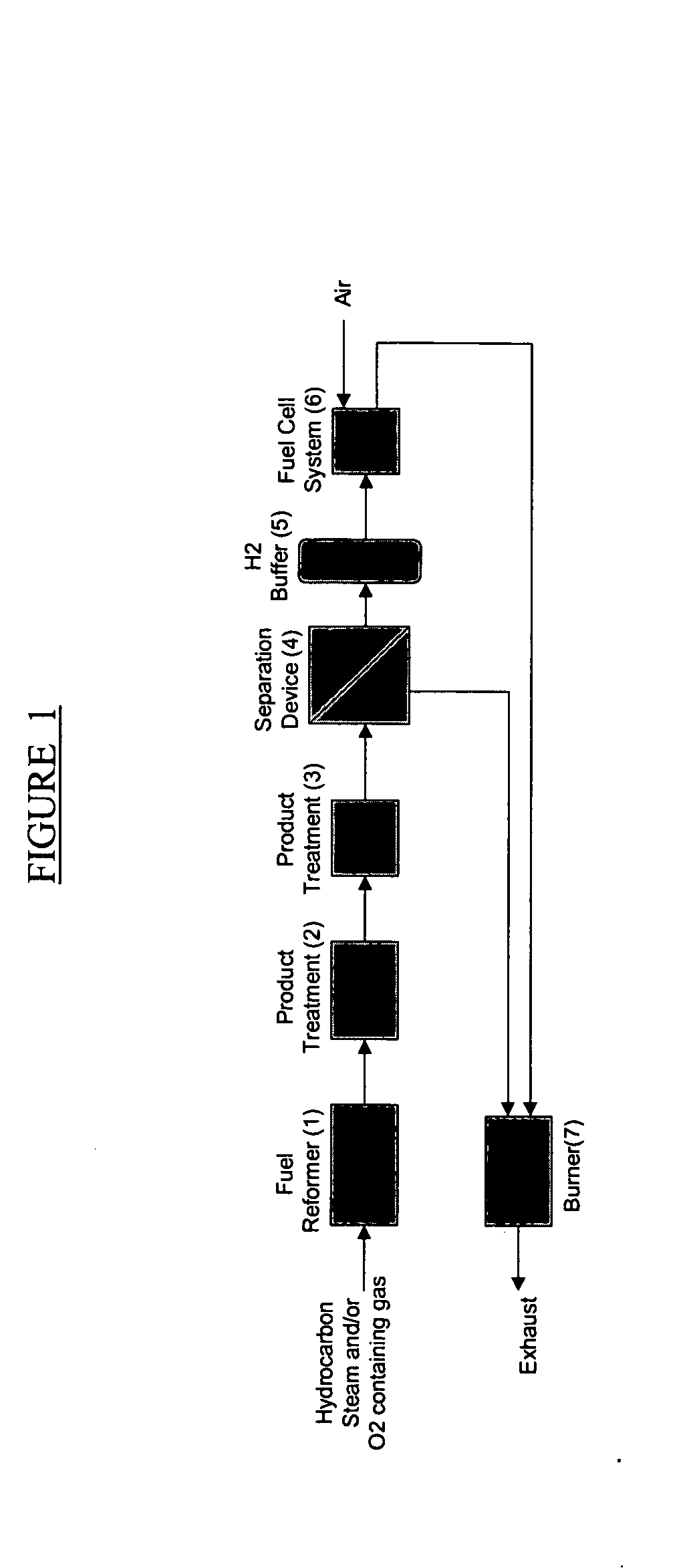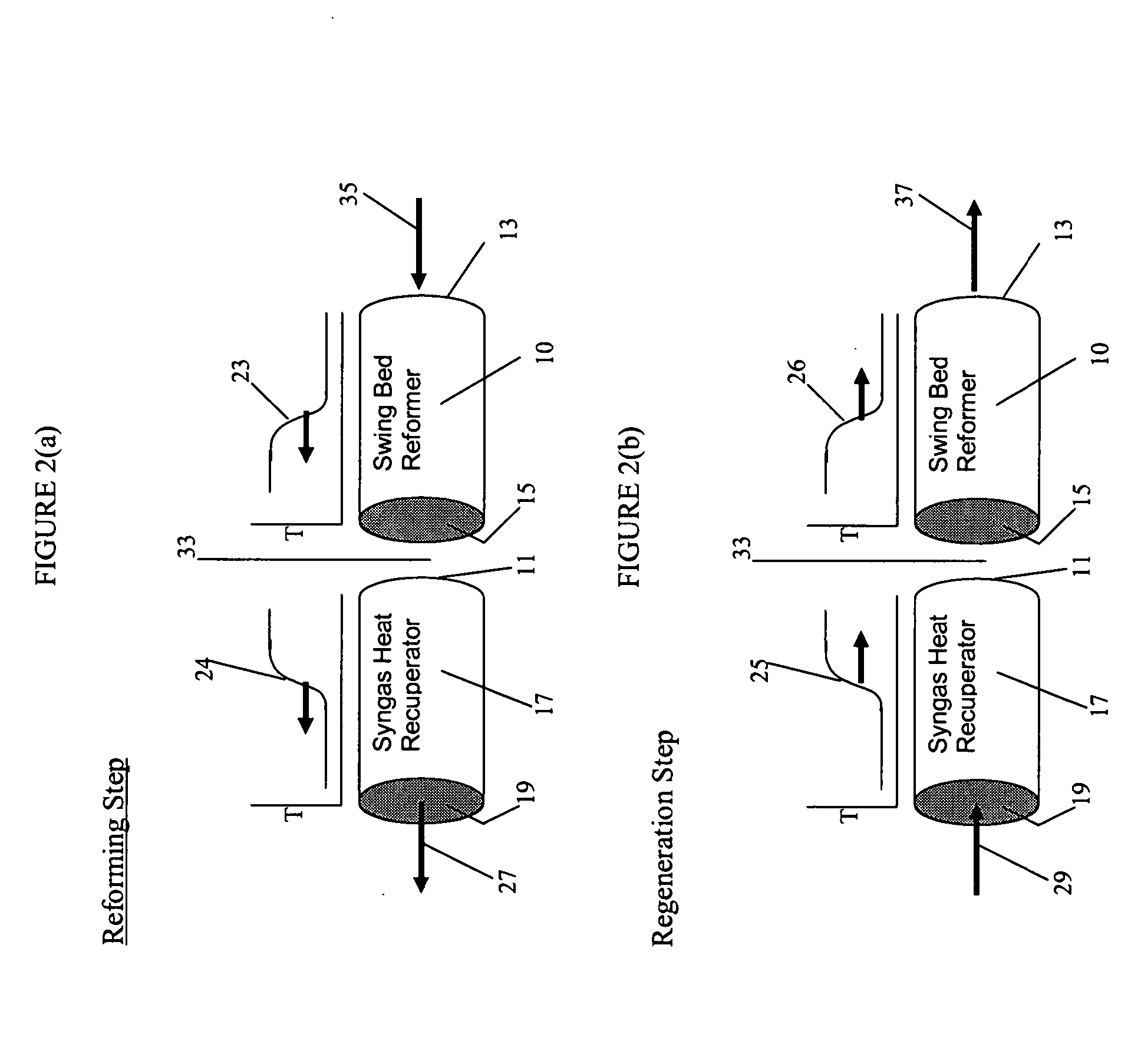Fuel cell fuel processor with hydrogen buffering and staged membrane
a fuel processor and fuel cell technology, applied in the field of fuel cell systems, can solve the problems of limited use of space-constrained fuel cell applications, excessive heat generation, and substantial yield of hsub>2/sub
- Summary
- Abstract
- Description
- Claims
- Application Information
AI Technical Summary
Benefits of technology
Problems solved by technology
Method used
Image
Examples
example 1
Power During Start-Up
[0088]FIG. 7 shows the maximum time over which hydrogen can be drawn from a hydrogen buffer, as a function of fuel cell power output. In this example a hydrogen buffer of size 10 liters storing hydrogen at 15 atm is used in conjunction with a 50% efficient fuel cell system having 50 kWe maximum power and operating at ambient pressure. This time reflects the duration that the fuel cell can be operated before hydrogen input from the reforming system is required, and thus represents the time available for processor startup. The available time for processor start-up and hydrogen rich gas production will vary with the size of the buffer and the maximum pressure at which the hydrogen gas is stored. For larger buffer size and / or higher storage pressures available start-up time will increase at a given initial sustained power output from the fuel cell system.
example 2
Turndown and Transients
[0089] In this example, the hydrogen demand of a fuel processor (˜0.9 g / sec H2 maximum output), that is connected to a fuel cell system for operating, over automobile drive-cycle is moderated via the hydrogen buffer of 10 liter size capable of storing hydrogen at pressures up to 20 bars. The fuel processor is assumed to take 30 seconds to heat-up and start producing hydrogen. It is further assumed that the fuel processor is capable of operating only in two modes, ON (full power or maximum H2 output) and OFF (zero power or zero H2 output). The hydrogen demand from the fuel cell is met by supplying hydrogen from the buffer and as the buffer pressure falls below certain set value (4 bars), the fuel processor is turned ON to produce H2 at its 100% rated value and fill the buffer. Once the buffer pressure builds up to a certain pressure (18 bars) the fuel processor is turned OFF. FIG. 8 shows hydrogen supply to buffer from the processor and demand from the fuel ce...
PUM
| Property | Measurement | Unit |
|---|---|---|
| thick | aaaaa | aaaaa |
| thick | aaaaa | aaaaa |
| temperature | aaaaa | aaaaa |
Abstract
Description
Claims
Application Information
 Login to View More
Login to View More - R&D Engineer
- R&D Manager
- IP Professional
- Industry Leading Data Capabilities
- Powerful AI technology
- Patent DNA Extraction
Browse by: Latest US Patents, China's latest patents, Technical Efficacy Thesaurus, Application Domain, Technology Topic, Popular Technical Reports.
© 2024 PatSnap. All rights reserved.Legal|Privacy policy|Modern Slavery Act Transparency Statement|Sitemap|About US| Contact US: help@patsnap.com










